By Claire Gaskill
Discovery Doesn’t Require Transportation
Travel writing is the product of a journey. The twists and turns, ups and downs, and discoveries and setbacks of travel are compiled into paragraphs allowing others a peek into a journey created by exposure to the other and personal growth. As curious readers, we seek the writer’s perspective on his journey, whether his destination is known or unknown to us. Personally, as a student and a reader, I sought a new perspective on the familiar South Carolina low country I knew from my childhood. A basic internet search put Pat Conroy’s The Water is Wide: A Memoir on the map for me. Originally published by Boston: Houghton Mifflin in 1972, this New York Times Best Seller contains 322 pages and can be purchased both online and in brick and mortar for just shy of $13.
Not Just a Story about the Low Country
Pat Conroy, a Citadel graduate with the aspiration to join the Peace Corps, returned to teach high school students at his alma mater in Beaufort, South Carolina. When his Peace Corps acceptance letter failed to arrive, Conroy became convinced he could make a greater impact teaching on the South Carolina barrier island of Yamacraw. Fictional by only its name, Yamacraw Island refers to the real life Daufuskie Island, the location on which Conroy’s book is based.
The story is set in 1969, a time when racial division, especially in the south, was commonplace. However, upon experiencing Yamacraw for the first time, Conroy was able to count the number of non-African American citizens on just one of his hands. And, with access to the island restricted to a single boat and travel around the island limited to dirt paths where “only one car could traverse the road at a time,” it was not just ethnic diversity that was lacking; jobs, socioeconomic opportunities, and resources were also not plentiful (Conroy, 19). Stuck in a trend of generations of citizens with failed dreams and inadequate education, the school’s leadership felt as though Conroy was an answered prayer for the school.
The book details Conroy’s experience integrating his modern teaching style into a two-room “attractive and simply constructed white frame” school house that has only seen one teacher, who also serves as the principle, for years (Conroy, 20). Mrs. Brown, who was an African American woman working in what was detailed as a white man’s world, was traditional in her teaching style, integrating capital punishment and considering manners to be the primary curriculum. Working to meet the requirements of the state instead of teaching the information, Mrs. Brown’s teaching style clashed entirely with Conroy’s. Conroy soon found out that “the children hated Mrs. Brown’s guts with their complete power of hating.” (Conroy, 159)
Conroy helped the students open up. He discovered their character and adjusted the curriculum to meet their knowledge gaps and needs, telling the students “they had to look upon themselves in a different light.” (Conroy, 54) He even integrated field trips to the mainland, a teaching tactic unheard of for these students up until this point. Conroy worked to prepare the students for life after graduation and wanted to give them the skills to have jobs on the mainland in an effort to break the generational cycle of economic struggle.
His career on the island was first threatened when it was brought to the school district and leadership attention that Conroy was not following the school’s teaching policy. With support of the parents, Conroy was able to hold on to his position. However, after being fired later on, he filed a lawsuit which he lost on the basis of school policy, ending his time on Yamacraw Island. Highlights of Conroy’s island experience include the struggle Mrs. Brown faced as a minority, challenges of creating cultural change, and perceptions the others had of the mainland.
Culture through Primary Education
Although this book shows us an inside perspective on the remote island of Yamacraw (Daufuskie Island), as readers, we are experiencing Yamacraw through the lens of children and the educational experience. This is unique because of the extreme innocence children have. Their perspectives are primarily shared without a filter, and their opinions are raw. Conroy is also not just a short-term island visitor who is interviewing and discovering with the sole purpose of detailing his experience through travel writing. Conroy came to the island with the primary goal of helping these children. In order to do this, he could not just gain a surface level understanding of the children he is teaching. Instead, to accomplish his all too important objective, he had to learn their practices, understand their flaws, and determine how to best fix problems. Through this process, Conroy gained a cultural literacy and applied his understanding, which he goes on to later detail in a book (the secondary purpose of his travel).
That being said, how do we know that Conroy is truly culturally literate, not just informed about the dialects and learning gaps among the island students? In order to teach the children, Conroy had to go through the initial struggle of realizing his prior teaching style needed to be adjusted to fit the educational needs of the island children. He then was able to transform his teaching throughout the book via his understanding of the culture. Teaching is challenging when you are a member of the culture; in order to effectively teach in a culture where you are the outsider, cultural literacy is essential to success. Conroy’s effective teaching to the local children and the bond he formed with the school community demonstrates he reached cultural literacy. This documented journey through cultural discovery and understanding leading to cultural literacy and its application is what makes this memoir travel writing.
One of the aspects of this travel writing that I struggled to comprehend was why Conroy was willing to publish such a powerful piece at the risk of harming the students’ idea of “normal” by exposing the flaws in the local education system to society beyond the confines of the island. Conroy was culturally literate and lived the culture each day at school. He knew how uninformed and ill prepared the students were for their potential mainland experiences after school. Yet, he was still willing to detail the flaws within the culture, knowing, as an educator, that this publicity would change the way the school system functioned. In doing this, as a reader, I feared that this would negatively allow the mainland culture to infiltrate the island and undermine its culture, which was so strongly solidified based on the physical barriers that come with existing on an island. The implications of this book are unwarranted cultural change through educational improvement and greater mainland exposure. I find it interesting that as a culturally literate outsider, this is a side effect of the book that Conroy was willing to accept. However, Conroy’s dedication to the improvement of the island educational system and lifestyle probably outweighed his concern of cultural change.
Unlike Anything I’ve Seen
The book is a more unconventional approach to travel writing in comparison to my prior exposure. Travel writers such as Anthony Bourdain and Paul Theroux travel with the intension and purpose to write. Conroy, on the other hand, travelled to find a purpose in his career that led him to help children through education. The mere thought of the book became entirely secondary. This makes his “research” of the island less conventional and more free forming. His method of inquiry was through his teaching; he discovered the culture primarily on a need-to-know basis to successfully do his job. Therefore, his “research questions” included what are the interests of the people of the island?, what is the career path for a resident?, what differentiates island citizens from mainland citizens?, and what drives the island citizens?. However, since his method of inquiry was very discovery and usage based, his “research” questions also, most likely, consisted of his daily thoughts and queries during his time teaching. For example, even questions like how much do the citizens know about America? and how literate are the citizens? were research questions provoked by daily experiences in the classroom.
As a reader and student of travel writing, I found it refreshing and more authentic that Conroy’s travel experience was not a series of interviews or predetermined adventures, like that of Bourdain and Theroux. I was inspired by the reflective nature of his writing, uncovering the island to the reader through a series of anecdotes and a storyline that makes you not only feel connected to the location but also the others that inhabit it. While reading, I developed empathy for the other, a feeling that is not usually provoked by travel writing formed with a more conventional inquiry process.
Conroy wanted to teach the audience about his experience. Daufuskie Island is primarily unknown. Even Conroy, who lived a boat ride away from the island, was unfamiliar with its culture. By detailing his experience, he was able to put Daufuskie Island on the map and allow the public to understand the struggles of the citizens, bring to light the racism and socioeconomic injustice, and demonstrate how a lack of a proper education can prevent future success. In doing this, Conroy works to get the audience to appreciate the value of education and change while also writing to gain a more public consideration for the people of Daufuskie Island.
Beyond the Book
As mentioned above, I decided to read this book in particular to gain an additional perspective and further my knowledge on an area I am so familiar with. That being said, since my foundational knowledge about the low country and Pat Conroy was fairly established, I decided to conduct additional research both while reading and after reading. I decided to do this instead of researching prior to reading because I felt that I did not know where my knowledge gaps existed. Reading the book allowed me to identify them, and researching provided me the information to fill them.
The main thing I researched was what is the developmental status of Daufuskie Island today. The book made the island appear to be almost a foreign land to the mainland, and I wanted to determine how much of that still holds true. I also thought that this may allow me to understand the implications of the book, as addressed above. Based on my research, I learned that the education system has been refined. A handful of full time residents attend primary school on the island, and then travel by bus and boat to Hilton Head Island for their secondary schooling. This more integrated approach to education requires a commute of over an hour during the high school years, but it helps assimilate the students more than they were in the book. This is a product of the issues addressed publicly by the book as well as the change in time period. As for the island itself, the book mentions that there were limited career opportunities on the island. As a business major, I am fascinated by economic development, and I wanted to determine if that still holds true. Today, the island’s main economy is tourism based. The island website describes a beautiful, authentic, and remote island getaway experience that indicates it is a destination unique to those along the east coast. That being said, my research did not include history or geography. I felt that I needed to answer deeper questions, and I was already very familiar with the geography. Furthermore, Conroy did a great job of addressing the island history through his own inquiry.
My favorite part of additional research was diving into the reviews. It is easy to see that this is not just a praised book but a loved one. Reviews included words like “enlightening”, “impressed”, “magical”, and “reread”. Conroy is touted as a praised storyteller, a strong writer, and able to address historical topics in a less historical setting. Overall, this book, the associated reviews, and my additional research have made Daufuskie Island a must visit location for me, and it has now earned a spot on my bucket list.
Bibliography
“Beaufort County Schools.” Beaufort County School District, www.beaufortschools.net/s_c_h_o_o_l_s.
Conroy, Pat. The Water Is Wide: A Memoir. Bantam Books, 1972.
DaufuskieIsland.com, DaufuskieIsland.com, www.daufuskieisland.com/.
Daufuskie Island, SC, Lton Head Island-Bluffton Chamber of Commerce & Visitor and Convention Bureau, 13 Oct. 2015, www.hiltonheadisland.org/daufuskie-island/.
MarCom, Tucker. Enjoy Historic Daufuskie Island, SC, www.enjoydaufuskie.com/.
“The Water Is Wide.” Goodreads, www.goodreads.com/book/show/129947.The_Water_is_Wide.
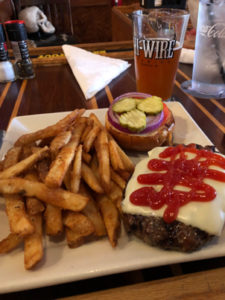 Our stomachs were growling as we arrived to downtown Hendersonville at around 3pm on a Friday afternoon in the middle of October. In spite of this ravenous hunger, we searched for the nearest sports bar we could find. What we encountered was an Irish pub called Black Rose Public House right at the center of the downtown area, only about 20 yards from the city courthouse. Looking at their menu, the pub seemed to offer a variety of both American and Irish dishes as well as a full bar with 24 hand-picked beer and cider taps. The bar looked newly renovated and was preparing for the Halloween festivity as seen by its intricate decorations. There were a few parties sitting both in and outside, enjoying the sunny fall afternoon. We decided to sit at the bar and immediately began scanning the menu for the heartiest dishes they served. I also took a chance to look over the list of beers they had on tap, and was appreciative to see that a majority were from local Hendersonville and Asheville brewing companies. Looking up from the menu I saw four flat screen TV’s, playing both the local news and the golf channel, which gave me a feeling of surprising comfort in this new place after driving three long hours and not having eaten anything since the early morning.
Our stomachs were growling as we arrived to downtown Hendersonville at around 3pm on a Friday afternoon in the middle of October. In spite of this ravenous hunger, we searched for the nearest sports bar we could find. What we encountered was an Irish pub called Black Rose Public House right at the center of the downtown area, only about 20 yards from the city courthouse. Looking at their menu, the pub seemed to offer a variety of both American and Irish dishes as well as a full bar with 24 hand-picked beer and cider taps. The bar looked newly renovated and was preparing for the Halloween festivity as seen by its intricate decorations. There were a few parties sitting both in and outside, enjoying the sunny fall afternoon. We decided to sit at the bar and immediately began scanning the menu for the heartiest dishes they served. I also took a chance to look over the list of beers they had on tap, and was appreciative to see that a majority were from local Hendersonville and Asheville brewing companies. Looking up from the menu I saw four flat screen TV’s, playing both the local news and the golf channel, which gave me a feeling of surprising comfort in this new place after driving three long hours and not having eaten anything since the early morning.

 By
By 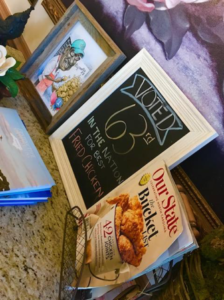
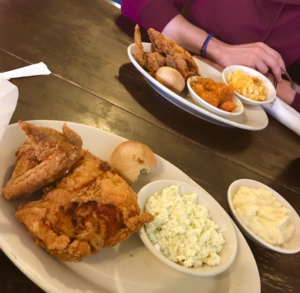





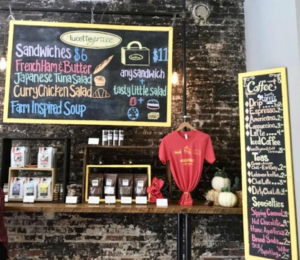
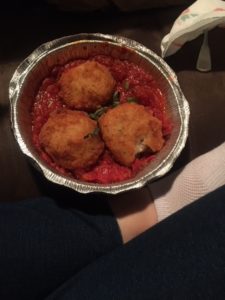 This review is special to me because I have been going to Daniel’s Restaurant and Catering for as long as I can remember. Whenever extended family came into town from Philadelphia, we would always take them here for a delicious Italian meal that was also reasonably priced, especially when compared to some of the places in Raleigh or Cary that were also on the list of “grandparent accepted” restaurants in the area. In addition to being affordable and delicious, Daniel’s is right down the road from my house! Google Maps calculates it as 1.8 miles away. That’s walkable, if you’re desperate. Due to my long history with this place, and its location 0.8 miles from Highway 64, Daniel’s was a natural choice for this review.
This review is special to me because I have been going to Daniel’s Restaurant and Catering for as long as I can remember. Whenever extended family came into town from Philadelphia, we would always take them here for a delicious Italian meal that was also reasonably priced, especially when compared to some of the places in Raleigh or Cary that were also on the list of “grandparent accepted” restaurants in the area. In addition to being affordable and delicious, Daniel’s is right down the road from my house! Google Maps calculates it as 1.8 miles away. That’s walkable, if you’re desperate. Due to my long history with this place, and its location 0.8 miles from Highway 64, Daniel’s was a natural choice for this review. 
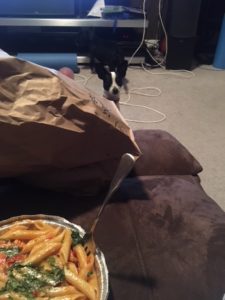 While I could survive on arancini alone if I really put my mind to it, I also opted for an entree, and what better dish to select for the main course than pasta? There were plenty of “pastabilities” on the menu, but I decided to go for the house favorite: penne alla casa. This is, as written on the menu, “a heavenly concoction of red sauce and cream, garlic, Romano cheese, sun dried tomatoes, and spinach.” I also added chicken so I could pretend I was having something healthy. Overall, I thoroughly enjoyed this dish as well. The sauce was indeed heavenly, with just the right amount of kick from the garlic, the pasta was nice and al dente, and the chicken was well-prepared. The only critique I had was that there was a bit too much spinach in the mix for my liking, but that’s too much a personal preference for me to count it as a negative aspect of their recipe. After all, I had more than enough pasta to eat off of for three days after my meal, and that’s far more exciting than worrying about the quantity of spinach. Between the leftovers and the half a loaf of garlic bread in the takeout bag, I was one happy customer.
While I could survive on arancini alone if I really put my mind to it, I also opted for an entree, and what better dish to select for the main course than pasta? There were plenty of “pastabilities” on the menu, but I decided to go for the house favorite: penne alla casa. This is, as written on the menu, “a heavenly concoction of red sauce and cream, garlic, Romano cheese, sun dried tomatoes, and spinach.” I also added chicken so I could pretend I was having something healthy. Overall, I thoroughly enjoyed this dish as well. The sauce was indeed heavenly, with just the right amount of kick from the garlic, the pasta was nice and al dente, and the chicken was well-prepared. The only critique I had was that there was a bit too much spinach in the mix for my liking, but that’s too much a personal preference for me to count it as a negative aspect of their recipe. After all, I had more than enough pasta to eat off of for three days after my meal, and that’s far more exciting than worrying about the quantity of spinach. Between the leftovers and the half a loaf of garlic bread in the takeout bag, I was one happy customer.